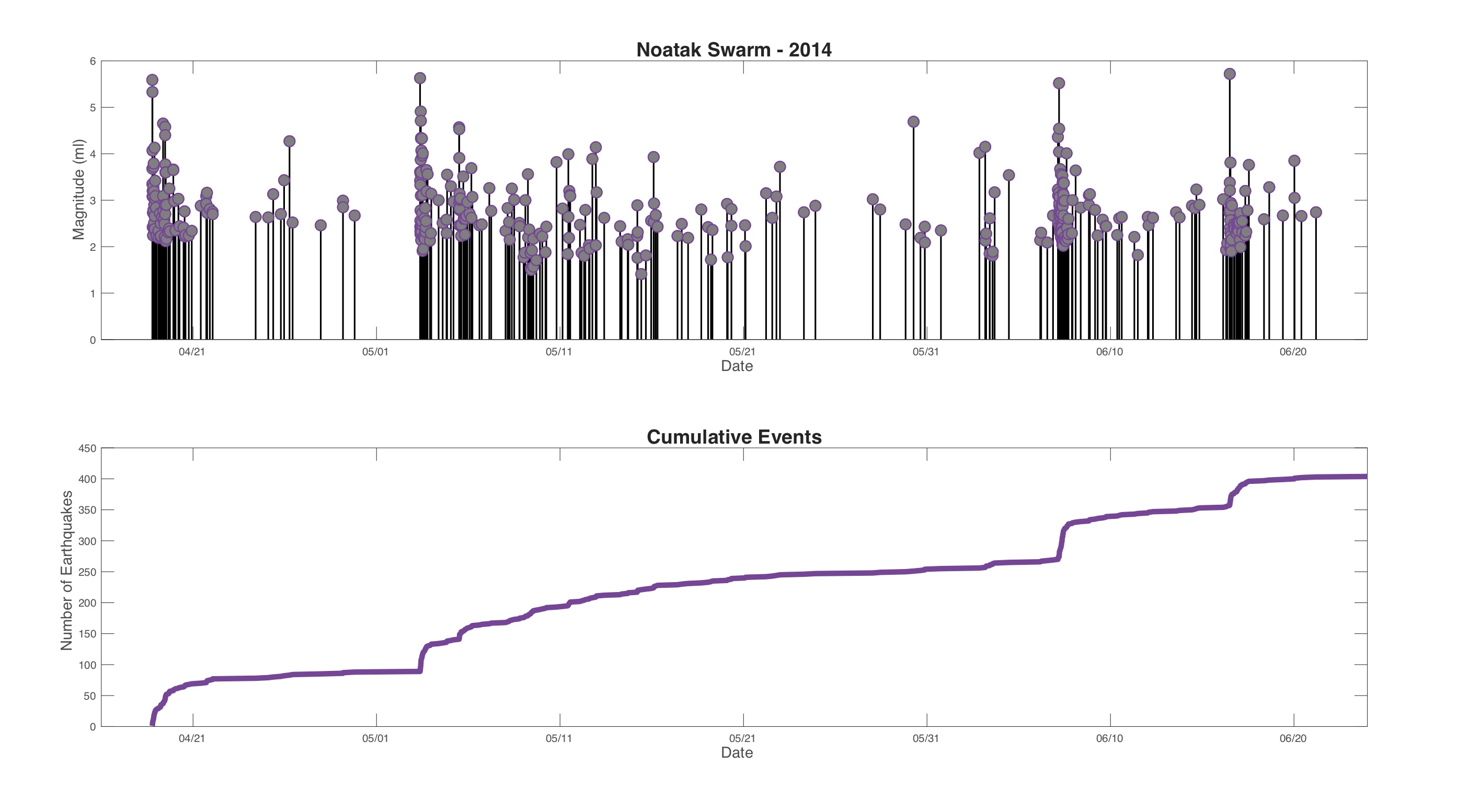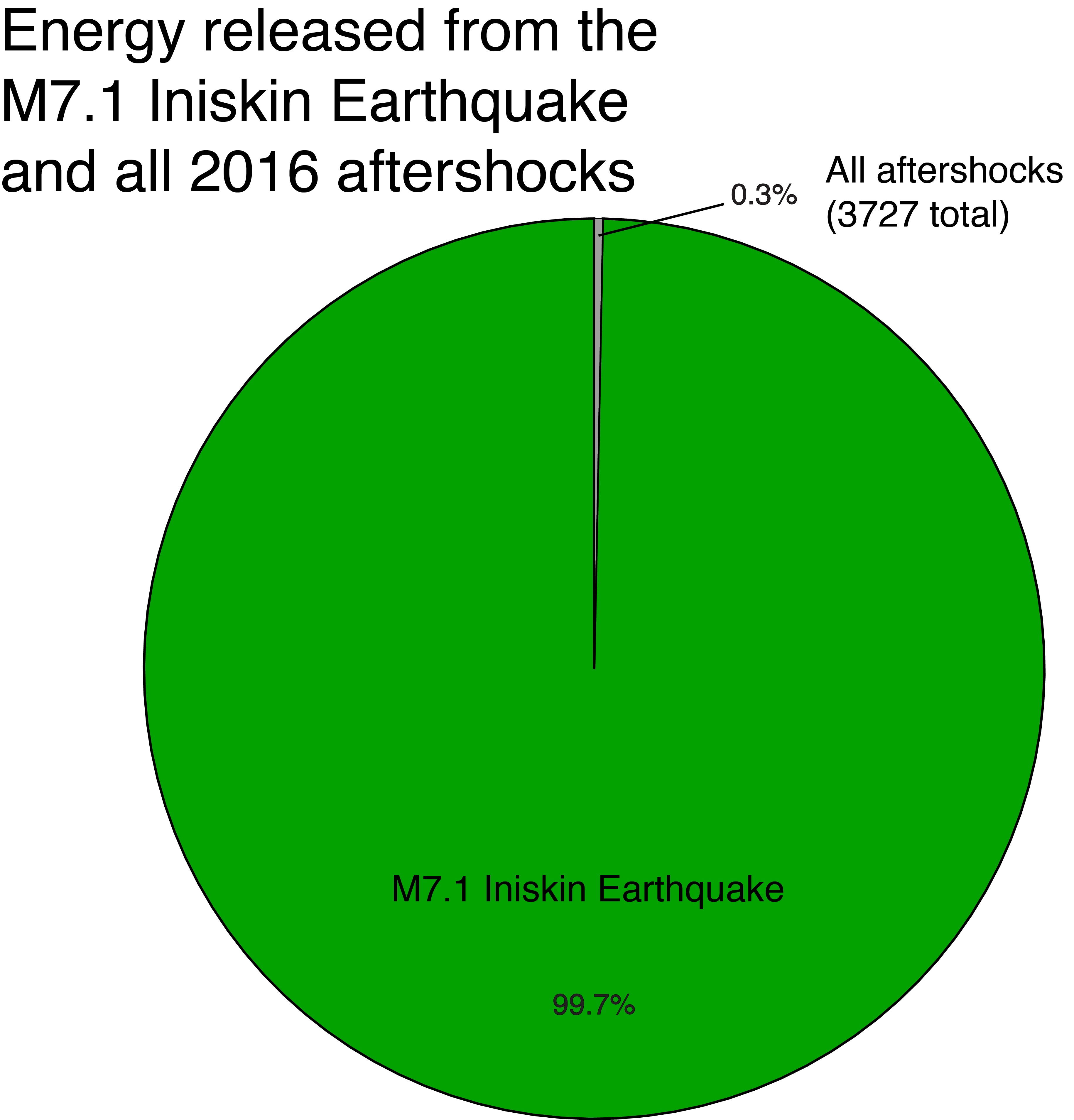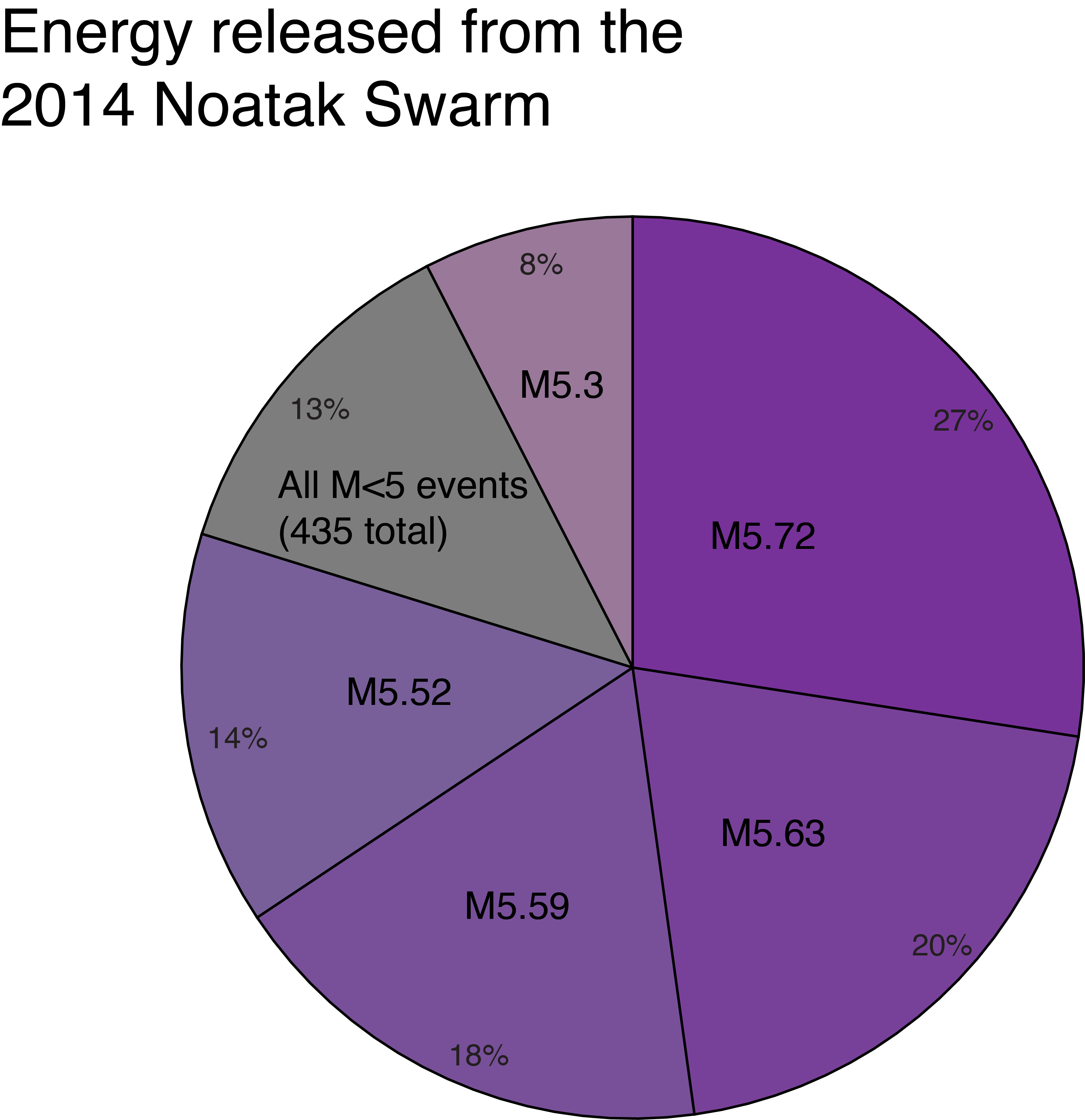



If you've paid much attention to earthquakes in Alaska over the last few years, you've probably heard the phrase “earthquake swarm.” In 2014, a swarm near Noatak rattled residents with five magnitude 5.3-5.7 earthquakes spread out over two months. In 2015, a swarm off St. George Island shook the normally quiet Pribilofs. And in 2018, a swarm in the eastern Brooks Range accounted for more than 2,000 of the year's record 55,000 earthquakes in Alaska.
But what is a swarm, and how is it different from other earthquake activity?
Most Alaskans are well acquainted with the classic mainshock-aftershock sequence: a large earthquake strikes, followed by a series of smaller aftershocks that taper off over time. When a smaller earthquake comes before the mainshock, we call it a foreshock-mainshock-aftershock sequence, but it's essentially the same thing. In both cases, you have one larger earthquake and then a series of smaller aftershocks as the earth adjusts to changes in stress caused by the mainshock. These are the most common types of earthquake sequences.
Swarms don't work like that. An earthquake swarm has no clear mainshock. Instead, it churns out a number of earthquakes of comparable size over days or months, with a lot of smaller quakes thrown in. If a mainshock-aftershock sequence is a rapid release followed by a period of readjustment, then a swarm is more of a gradual and uneven release that follows no predictable pattern.
This points to another difference between mainshock-aftershock sequences and swarms. Unlike an aftershock sequence, we can’t forecast how long a swarm will last. Because aftershocks decay at somewhat predictable rates, we can use the beginning of an aftershock sequence to project roughly how long it will last. Swarms don't play by those rules, so we can only watch and wait for them to end.
We also don't know yet exactly why some sequences happen as swarms. In Alaska, it appears that the Brooks Range is prone to earthquake swarms. In addition to the Noatak swarm and the eastern Brooks Range swarm of 2018, there is an ongoing swarm right now in the Purcell Mountains south of Kobuk. Fortunately, we're recording these remote swarms in far more detail ever before thanks to the dense network of Transportable Array stations that now blankets northern Alaska. In time, this should improve our understanding of swarms and the places where they happen.



